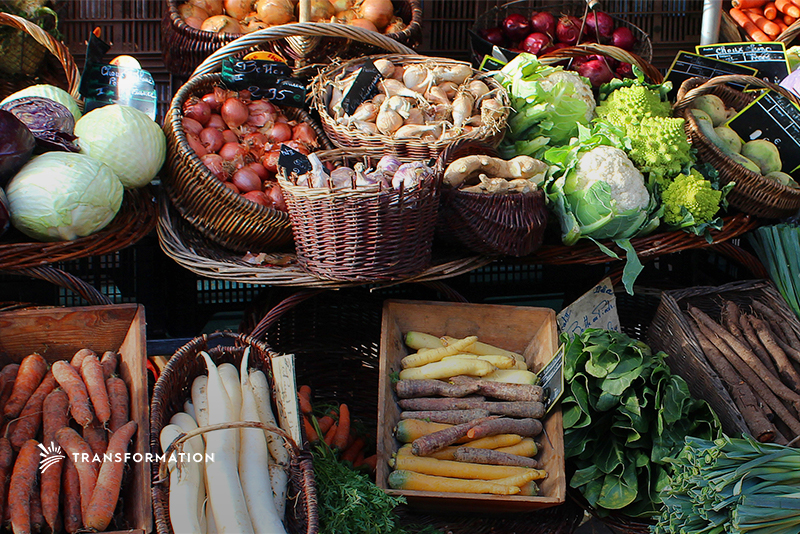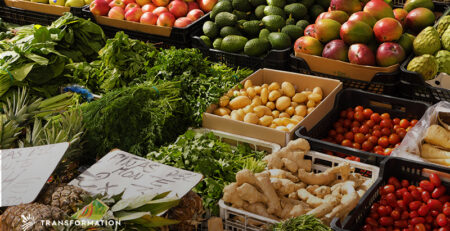Localizing the Food System: Food Hubs
Currently, the mainstream food system is controlled by corporate driven supply chains, which describe the set of interconnected steps starting with raw materials and ending with the lowest cost product while still fulfilling consumer’s needs. However, there are many environmental and social externalities inherent to the current model of food production and consumption. Externalities are costs not included in the market price of food, including ecological effects, environmental quality, greenhouse gas emissions, animal welfare, social costs linked to labor, and public health impacts.
On the other hand, a value chain starts with consumer preferences, such as animal welfare, and ends with a value-added product at a price the consumer is willing to pay. Combining the positive attributes of the supply chains and value chains, scale and integrity, respectively, result in value-based supply chains. Business models like food hubs employ value-based supply chains to economically scale local food production and consumption in a way that mitigates negative environmental and social externalities.
COVID-19 Pandemic Necessitates Food-Systems Change
The COVID-19 pandemic has heightened the urgency to address the inflexibility of the current food supply chain. Since COVID-19 disrupted the food supply chain with unprecedented labor shortages, demand inconsistencies, and invariable distribution capacity, investing in localized food systems is more crucial than ever. Unlike the current globalized and industrialized food system, local food systems demonstrate the ability to provide for people at a time where both food waste and food shortages are skyrocketing. Now is the time to rebuild a more sustainable and resilient food system that can both protect against future crises and empower local economies.
Food Hubs: Sustainable Investment Opportunity
Food hubs have the potential to increase food localization. A food hub is a business model that actively manages the aggregation, distribution, and marketing of local and identity-preserved food products. This modern alternative food network connects small and medium-sized stakeholders and producers to otherwise unattainable markets. Furthermore, food hubs maintain social and environmental goals that attempt to challenge the dominant food system. Some examples of these mission-based goals include:
- Improving human health in the local community or region
- Training farmers/ranchers in sustainable production and marketing practices
- Ensuring that producers/suppliers receive a fair price for their products
Including social and environmental goals is challenging when the mainstream food system does not value these goals and often works against them in favor of maximum economic profit. However, over time food hubs have developed successful business models that demonstrate consistent profit margins.
Financial Potential
Despite working against the dominant system of commodification, low prices, and volume, food hubs can be a financially viable business that supports food localization. In multiple studies between 2012-2016, two-thirds to three-quarters of food hubs reported breaking even or better and increased profitability over the same period, demonstrating resilience and high survival rates. In a time where local food is increasingly important to the consumer, food hubs are growing as a business opportunity. Even mainstream retailers like Walmart have been attempting to fulfill consumer demand for local food products since 2008.
Although Walmart is unlikely to use “local food” as anything but a marketing ploy, food hubs have the potential for financial sustainability while omitting negative social and environmental externalities. A case study of local food hubs in Santa Barbara found that the food system achieved success when:
- Scaling up from direct marketing instead of scaling down from mainstream distribution
- Maintaining a commitment to alternative mission-based goals
- Sustaining high motivation of individuals to achieve alternative-based goals
Ultimately, financially building food hubs is one of the best ways impact investors can support alternative food networks and change within the current food system.
Conclusions
As consumer demand for local foodstuff continues to emerge and mature, the National Food Hub Surveys have shown that more food hubs are popping up, and pre-existing food hubs continue to flourish. Furthermore, the profitability of food hubs indicates that this business model can have both financial success and achieve mission-based goals. The pandemic exposed the brittle nature of the current food supply chain. To address these new stressors on the food system and the already problematic social and environmental externalities, advancing food system localization will prove to be flexible and resilient in the face of future crises. Food hubs are a growing solution to a global problem.




Leave a Reply